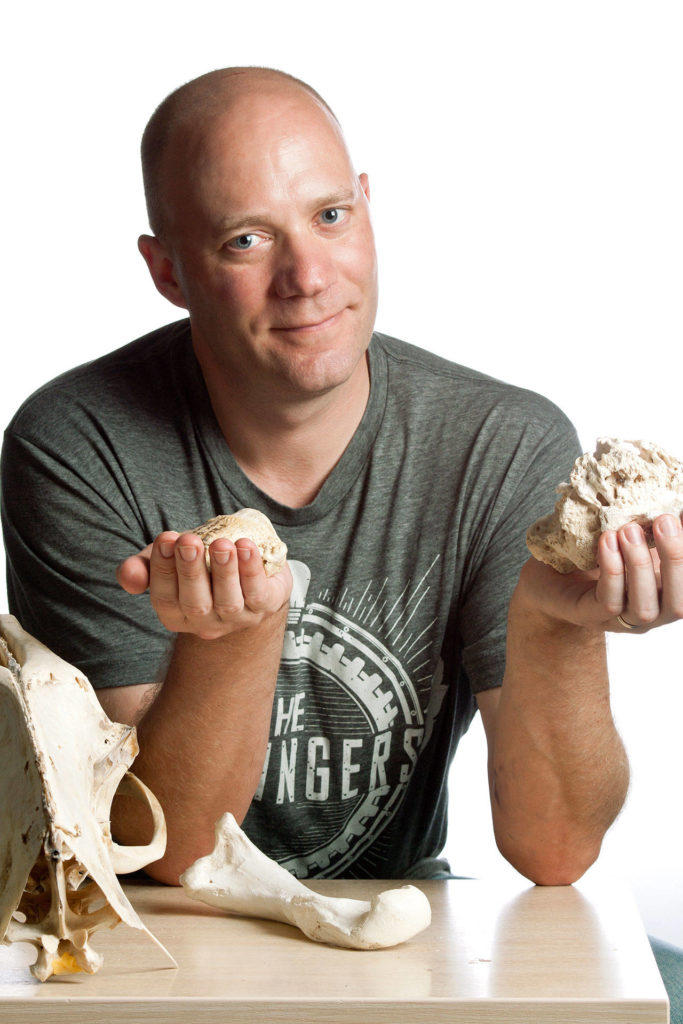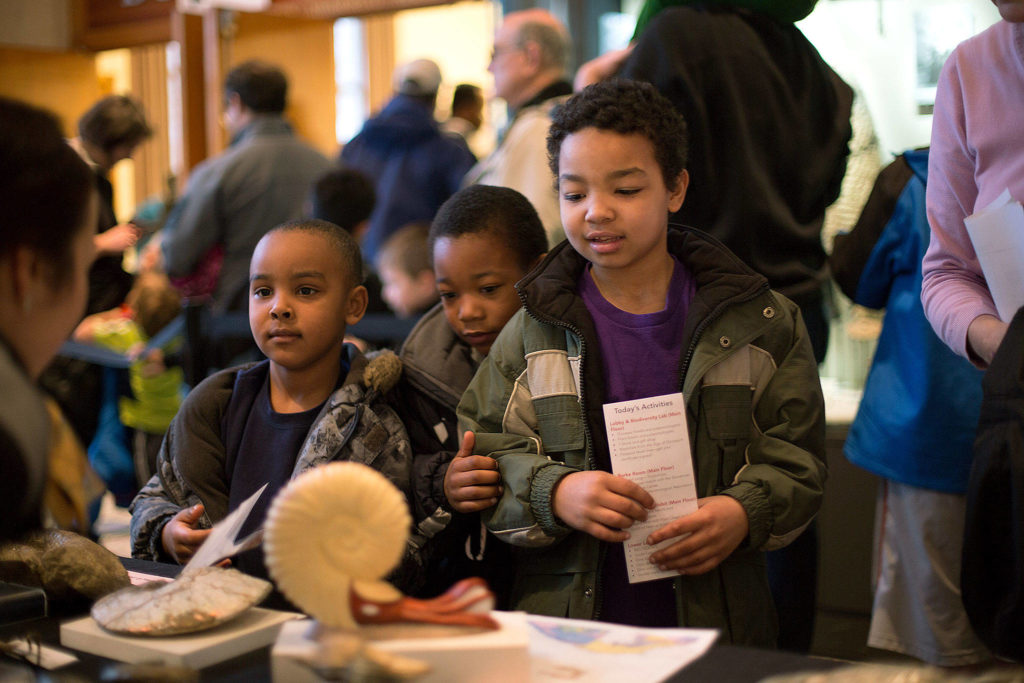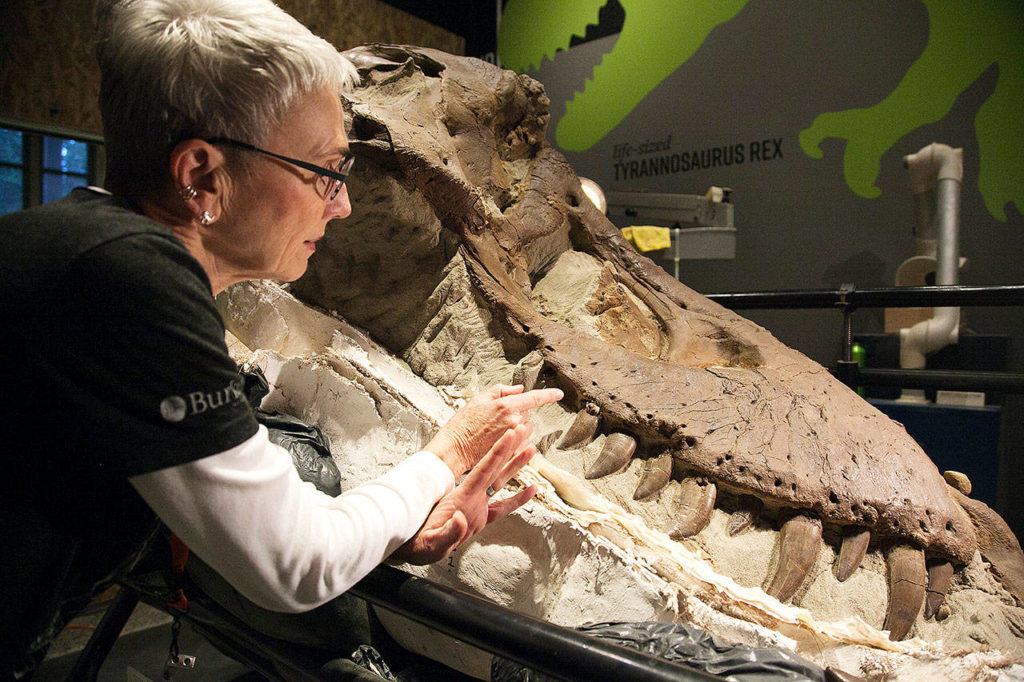Yabba dabba doo!
This is your chance to have a megasaurus good time.
Dino Days are March 3-4 at the Burke Museum in Seattle, with a free talk by a dino expert on March 2.
Examine dinosaur fossils and other prehistoric creatures from the Burke’s mighty collection. Dress up as a paleontologist. Have your face painted like a dinosaur and give your best roar. Odds are you won’t be alone in your fandom.
“Dino Days is our most popular event,” Burke spokeswoman Andrea Godinez said.
“Our theme is to be a junior paleontologist. There are hands-on crafts and activities. We have some dig pits where kids can uncover fossils with paleontologist tools and wear lab coats.”
There are fossils galore.
“We have hundreds of fossils, including dinosaurs and other types of prehistoric plants and animals, that aren’t normally out on view,” she said. “We don’t have enough room to have them out in the galleries all the time, and they’re also actively being used by researchers, too. So it’s a great time to see a good snapshot of the types of fossils that are in the museum collection.”
There will be real paleontologists — with real jobs. They work at the Burke and will answer all your questions, big and small.
“It’s great for little kids who love dinosaurs and want to know what types of careers there are working with fossils,” Godinez said.
The Burke’s paleontology and geology department cares for more than 3 million specimens of fossil invertebrates, vertebrates, plants, microfossils and trace fossils.
On March 2, world-renowned Tyrannosaurus rex expert John Hutchinson will share the latest research on how dinosaurs moved and how their walking and running changed over time. The talk, for ages 10 and up, is free. Pre-registration is recommended.
Godinez said people are encouraged to buy tickets online in advance to guarantee a spot at the museum March 3 and 4.
Can’t make it to Dino Days? No problem.
“There are still lots of chances to come and enjoy some dinosaurs,” Godinez said. “Every day in our permanent galleries we have an allosaurus and a stegosaurus and triceratops.”
In the work-in-progress exhibit, visitors can look through windows to see paleontologists toil.
“One of the things they are working on is the T. rex skull that was collected by one of our curators,” she said. “They are also working on other dinosaurs and prehistoric animals from other research trips.”
On the last Sunday of the month through June, there is a program for kids with mini activities. Topics are: March 25, Ancient Animals; April 29, Dino Environments; May 27, Undersea Adventures; and on June 24, Ice Ages.
Fun fact: Only one dinosaur has ever been described as from Washington state.
The fossil is a partial left thigh bone of a theropod dinosaur, the group of two-legged, meat-eating dinosaurs that includes velociraptor and Tyrannosaurus rex.
It was found along the shores of Sucia Island State Park in the San Juan Islands, collected with permits, and is on display at the Burke Museum.
If you go
Dino Days are 10 a.m. to 5 p.m. March 3 and 4 at Burke Museum, 4331 Memorial Way NE, Seattle, University of Washington campus.
Hours are 10 a.m. to 5 p.m. daily, and until 8 p.m. on first Thursdays. Admission is $10 general, $8 senior and $7.50 student/youth. Admission is free for ages 4 and under, Burke members, UW students, faculty and staff. Admission is free for everyone on the first Thursday of each month. UW parking fees are $3 up to four hours or $15 all day on weekdays, $5 flat fee on Saturday before noon. Free parking after noon on Saturday and all day on Sunday.
Call 206-543-5590 or visit www.burkemuseum.org.
Dino talk
“Dinosaur Movement: From Humble Beginnings to Earthshaking Giants” by Tyrannosaurus rex expert John Hutchinson, 7 p.m. March 2, Kane Hall 130, UW Seattle Campus.
Hutchinson is a professor of evolutionary biomechanics at the Royal Veterinary College in London. His research focuses on how very large animals stand and move, and how locomotion evolved in different groups of land vertebrates.
Pre-register at burkemuseum.org/dinotalk.
Talk to us
> Give us your news tips.
> Send us a letter to the editor.
> More Herald contact information.




























